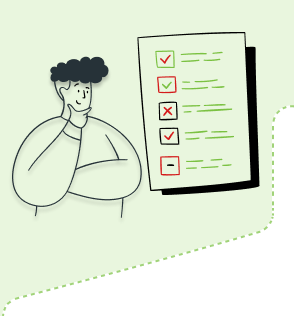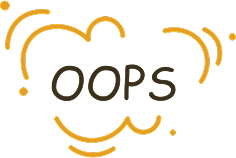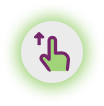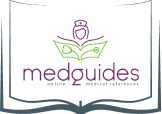
Courses

Join now

Courses

Join now
NATIONAL AND STATE NURSING EXAM- MCQ _MG_00 162

“ Your score is /25 ”
0
25
Show Answer
1. In Weber test and Rinne’s test cranial nerve examined is:
a. Cranial nerve 2
b. Cranial nerve 7
c. Cranial nerve 1
d. Cranial nerve 8
Answer: d. Cranial nerve 8
Description:Cranial nerve 8, acoustic is examined though these tests. Cranial nerve 1 is olfactory which helps in smelling, cranial nerve 2 is optic which is assess with the help of Snellen’s chart. Cranial nerve 7 is facial.
2. Goniometer is sued to assess.
a. Visual acuity
b. Auditory faculty
c. Range of motion of joints
d. Muscle strength
Answer: c. Range of motion of joints
Description:A goniometer is used to assess the range of motion of joints. It's a medical tool that measures the angles of a joint to determine the extent of movement and flexibility. This information is valuable in evaluating conditions that affect joint mobility, such as injuries, arthritis, and other musculoskeletal disorders.
3. Lateral curvature of the spine is called as:
a. Lordosis
b. Pectus excavatum
c. Scoliosis
d. Kyphosis
Answer: c. Scoliosis
Description:Anterior curvature of spine = Lordosis • Posterior curvature of spine = Kyphosis • Lateral curvature of spine = Scoliosis
4. The equipment used in the examination of ears is:
a. Laryngoscope
b. Proctoscope
c. Otoscope
d. Ophthalmoscope
Answer: c. Otoscope
Description:An otoscope or auriscope is a medical device which is used to look into the ears. Healthcare providers use otoscope to screen for illness during regular check-up and also to investigate ear symptoms. An otoscope potentially give a view of the ear canal and tympanic membrane or eardrum.
5. The nurse is auscultating the client’s lung fields. The systematic pattern used for comparison is:
a. Top to bottom
b. Anterior to posterior
c. Side to side
d. Interspace to interspace
Answer: c. Side to side
Description:Intensity, pitch, duration and quality of breath sounds are compared side to side on auscultation of lung fields.
6. Redness over the bony prominence of a bed ridden patient suggests:
a. Poor nutritional status
b. Bedsore
c. Ulceration
d. Wound infection
Answer: b. Bedsore
Description:Redness over the bony prominence of a bedridden patient suggests a bedsore. Bedsores, also known as pressure ulcers or decubitus ulcers, are localized injuries to the skin and underlying tissue that typically occur over bony prominences due to prolonged pressure, friction, and/or shear forces. The initial stage of a bedsore often presents as redness on the skin, indicating tissue damage and the potential development of an ulcer if not properly managed.
7. Crackling sounds bilaterally at the bases of lungs is referred to as:
a. Rales
b. Pleural rub
c. Rales
d. Rhonchi
Answer: c. Rales
Description:Crackling sounds heard bilaterally at the bases of the lungs are referred to as rales. Rales are also known as crackles and are abnormal lung sounds that can indicate various conditions, such as fluid accumulation in the lungs (pulmonary edema) or lung infections. They are often heard during inspiration and can have a fine or coarse quality depending on the underlying cause.
8. Which of the following lung sounds is predominant in a patient with asthma in exacerbation?
a. Pleural rub
b. Crakes
c. Rhonchi
d. Wheezes
Answer: d. Wheezes
Description:The lung sound that is predominant in a patient with asthma in exacerbation is wheezes. Wheezes are high-pitched, musical sounds that occur during breathing and are typically caused by the narrowing of the airways, which is a characteristic feature of asthma. These sounds are often heard during both inhalation and exhalation and can indicate airway constriction and inflammation.
9. Instrument to detect the color of a solution is:
a. Calorimeter
b. Flame photometer
c. Chromatography
d. Colorimeter
Answer: d. Colorimeter
Description:The instrument used to detect the color of a solution is a colorimeter. It measures the absorbance or transmittance of light through a solution at a specific wavelength, which can be used to determine the concentration of a solute or the intensity of a color. This is commonly used in chemistry and biochemistry to analyze the properties of various substances.
10. History and physical examination of a client will help the nurse in:
a. Assessment
b. Evaluation of therapy
c. Health teaching
d. Nursing diagnosis and collaborative problems
Answer: d. Nursing diagnosis and collaborative problems
Description:History and physical examination of a client will help the nurse in Nursing diagnosis and collaborative problems. These components of assessment provide critical information for identifying the client's health status, potential problems, and appropriate nursing interventions. This information is essential for developing a comprehensive care plan and collaborating with other healthcare professionals to provide effective patient care.
11. Which of the following strategy is not effective in enhancing a patient impaired vision?
a. Stand in patient field of vision
b. Ensure enough light inside the room
c. Use of fluorescent lighting
d. Use bright colors around patient
Answer: c. Use of fluorescent lighting
Description:Fluorescent lighting can be problematic for individuals with impaired vision, especially those with certain eye conditions such as macular degeneration or sensitivity to light. It can create glare and flicker, which can exacerbate visual discomfort and difficulty. Using warmer, softer lighting options can be more suitable for individuals with impaired vision.
12. All of the following causes crackles in breath sounds?
a. Inspection
b. History taking
c. Auscultation
d. Palpation
Answer: b. History taking
Description:It seems there might be a misunderstanding in your question. Crackles in breath sounds are caused by abnormal lung conditions, not by assessment techniques like history taking, auscultation, inspection, or palpation. Crackles (also known as rales) are caused by the movement of air through fluid or partially collapsed airways in the lungs. They can be indicative of various respiratory issues, such as pneumonia, pulmonary edema, or fibrosis. If you meant to ask which of the given options is a common method of assessing lung sounds, the correct answer would be: a. Auscultation Auscultation involves listening to the sounds produced by the body, such as lung sounds, using a stethoscope. This technique is often used to assess breath sounds, including crackles, which can provide valuable information about the condition of the respiratory system.
13. Which of the following causes crackles in breath sounds?
a. Narrowed bronchioles
b. Moisture in air passages
c. Dryness in the upper airway
d. Pulmonary emboli
Answer: b. Moisture in air passages
Description:Moisture in air passages is the cause of crackles in breath sounds. Crackles, also known as rales, occur when there is a disruption in the flow of air through the small airways and alveoli (air sacs) in the lungs. When these airways are filled with fluid or have sticky secretions, the movement of air through them creates crackling sounds. This is commonly heard in conditions where there is increased fluid in the lungs, such as pneumonia, pulmonary edema, or bronchitis.
14. Deep palpation is used to assess:
a. Internal masses
b. Skin turgor
c. Internal organs
d. Both a and b
Answer: d. Both a and b
Description:Deep palpation is used to assess both internal organs and internal masses. This technique involves applying pressure with the hands to the body's surface in order to feel deeper structures and identify any abnormalities or masses within the body. It's commonly used in physical examinations to gather information about the condition of organs and tissues beneath the skin.
15. Which of the following substance is likely to increase the urine excretion?
a. Urinary analgesics
b. Caffeine-containing drinks, such as coffee and cola
c. NSAIDs.
d. Mushrooms
Answer: b. Caffeine-containing drinks, such as coffee and cola
Description:Caffeine-containing drinks, such as coffee and cola, are likely to increase urine excretion. Caffeine is a diuretic, which means it can promote the production of urine and lead to increased frequency of urination. This effect is due to caffeine's ability to stimulate the kidneys and increase blood flow through them, leading to greater filtration and urine formation.
16. Which among the following physical examination techniques requires stethoscope?
a. Percussion
b. Palpation
c. Observation
d. Auscultation
Answer: d. Auscultation
Description:Auscultation is the physical examination technique that requires a stethoscope. Auscultation involves listening to the sounds produced by the body, such as heart sounds, lung sounds, and bowel sounds, using a stethoscope. It's a crucial method for assessing the internal sounds of the body and can provide valuable information about the condition of various organs and systems.
17. Which of the following assessment data is a normal findings when performing percussion of the client’s chest?
a. Resonance
b. Tympany
c. Hyperresonance
d. Dullness
Answer: a. Resonance
Description: Resonance is a normal finding when performing percussion of the client's chest. Resonance is a sound that is heard when percussing over healthy lung tissue. It's a low-pitched, hollow sound that indicates the presence of air-filled spaces in the lungs. It's the expected percussion sound over normal lung tissue.
18. Normal biceps reflex response is:
a. Flexion of arm at elbow
b. Extension of arm at elbow
c. Extension of leg at knee
d. Flexion of leg at knee
Answer: a. Flexion of arm at elbow
Description:The biceps reflex, also known as the "biceps brachii reflex," is elicited by tapping the tendon of the biceps muscle, usually at the elbow joint. The expected response is a quick contraction (or flexion) of the biceps muscle, causing a slight movement of the forearm. This reflex tests the function of the nerve roots C5 and C6 and the associated nerve pathways.
19. Normal triceps reflex response is:
a. Flexion of arm at elbow
b. Extension of arm at elbow
c. Extension of leg at knee
d. Flexion of leg at knee
Answer: b. Extension of arm at elbow
Description:The triceps reflex, also known as the "triceps brachii reflex," is elicited by tapping the tendon of the triceps muscle, usually just above the elbow joint. The expected response is a quick extension of the forearm, resulting in a straightening of the arm at the elbow. This reflex tests the function of the nerve root C7 and the associated nerve pathways.
20. Normal patellar reflex response is:
a. Flexion of arm at elbow
b. Extension of arm at elbow
c. Extension of leg at knee
d. Flexion of leg at knee
Answer: c. Extension of leg at knee
Description:The patellar reflex, also known as the "knee jerk reflex," is elicited by tapping the patellar tendon, just below the kneecap. The expected response is a quick extension of the lower leg at the knee joint. This reflex tests the function of the nerve root L4 and the associated nerve pathways.
21. Normal achilleas reflex response is:
a. Flexion of arm at elbow
b. Extension of arm at elbow
c. Extension of leg at knee
d. Plantar flexion of foot
Answer: d. Plantar flexion of foot
Description:The Achilles reflex, also known as the "ankle jerk reflex," is elicited by tapping the Achilles tendon at the back of the ankle. The expected response is a quick movement of the foot, causing plantar flexion (pointing downward). This reflex tests the function of the nerve root S1 and the associated nerve pathways.
22. Normal plantar (Babinski) reflex response is adult is:
a. Flexion of arm at elbow
b. Extension of arm at elbow
c. Extension of leg at knee
d. Bending of toe downward.
Answer: d. Bending of toe downward.
Description:In adults, a normal response to the plantar reflex is the flexion or curling downward of the toes. However, in certain neurological conditions, such as upper motor neuron lesions, the response can be abnormal and result in the extension of the big toe and fanning out of the other toes. This abnormal response is referred to as the Babinski sign and is typically seen in infants but not in healthy adults.
23. Muscle strength 5 means:
a. Normal
b. Poor
c. Fair
d. Good
Answer: a. Normal
Description:Muscle strength 5 indicates a. Normal muscle strength. In the medical assessment of muscle strength using a scale of 0 to 5, where: 0: No muscle contraction detected. 1: Muscle flicker, but no movement. 2: Movement with gravity eliminated. 3: Movement against gravity, but not against resistance. 4: Movement against some resistance, but weak. 5: Normal muscle strength, full movement against resistance. A muscle strength rating of 5 indicates that the muscle is functioning at a normal level of strength, allowing full movement against resistance.
24. While assessing cranial nerve of a patient, the nurse asks the patient to raise the eyebrow, smile and show the teeth. The nurse is examining….cranial nerve
a. Olfactory
b. Vagus
c. Optic
d. Facial
Answer: d. Facial
Description:While assessing cranial nerves, the nurse asking the patient to raise the eyebrow, smile, and show the teeth is examining the facial nerve (cranial nerve VII). The facial nerve is responsible for controlling the muscles of facial expression, and its functions include raising the eyebrow, smiling, and showing the teeth.
25. Level of consciousness of a client is assessed using:
a. Braden scale
b. Snellen chart
c. Glassgow coma scale
d. Lund Browder method
Answer: c. Glassgow coma scale
Description:The level of consciousness of a client is assessed using the Glasgow Coma Scale (GCS). The Glasgow Coma Scale is a standardized tool used to assess the conscious state of a person based on their responses to various stimuli. It evaluates three aspects: eye-opening, verbal response, and motor response. It is commonly used in emergency medicine and critical care to assess the severity of brain injuries and altered states of consciousness.
Back

Please Answer Minimum Five Questions


